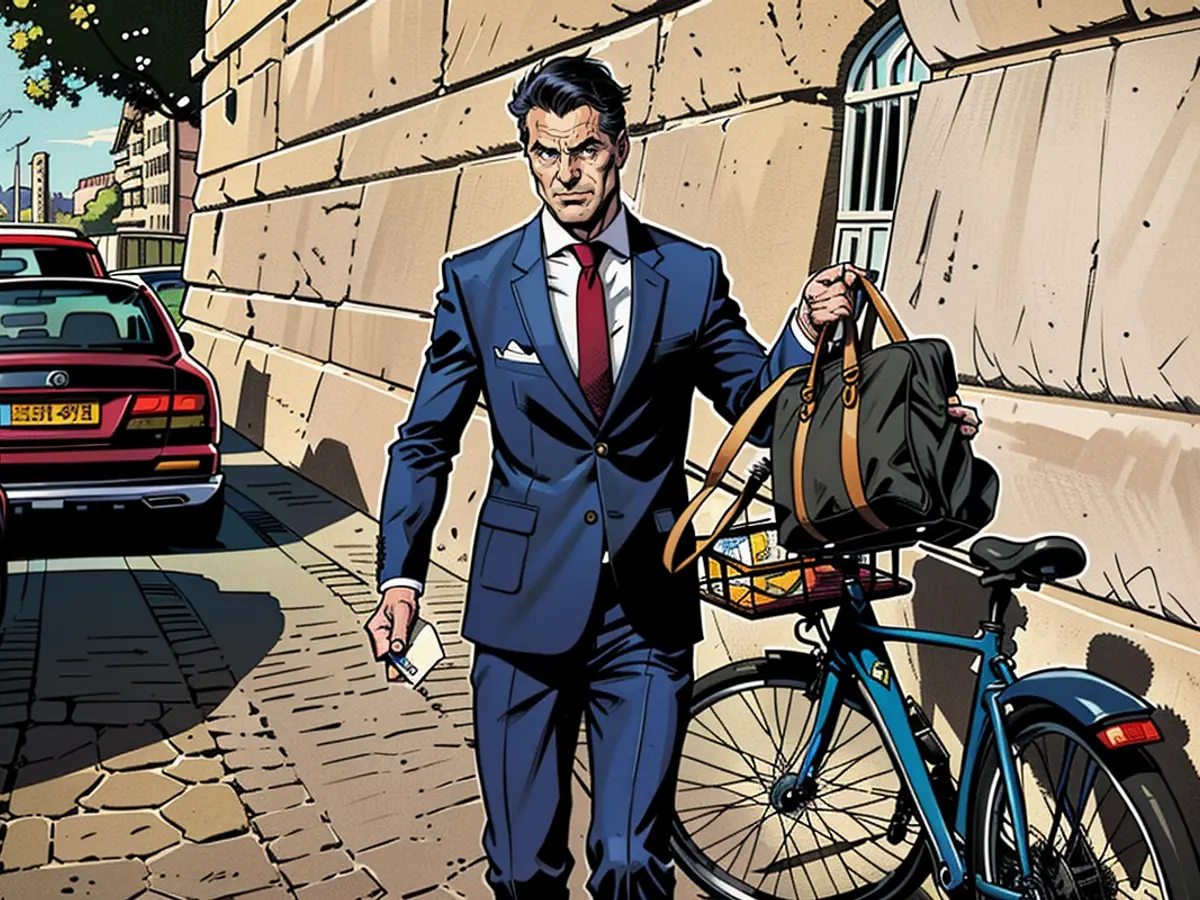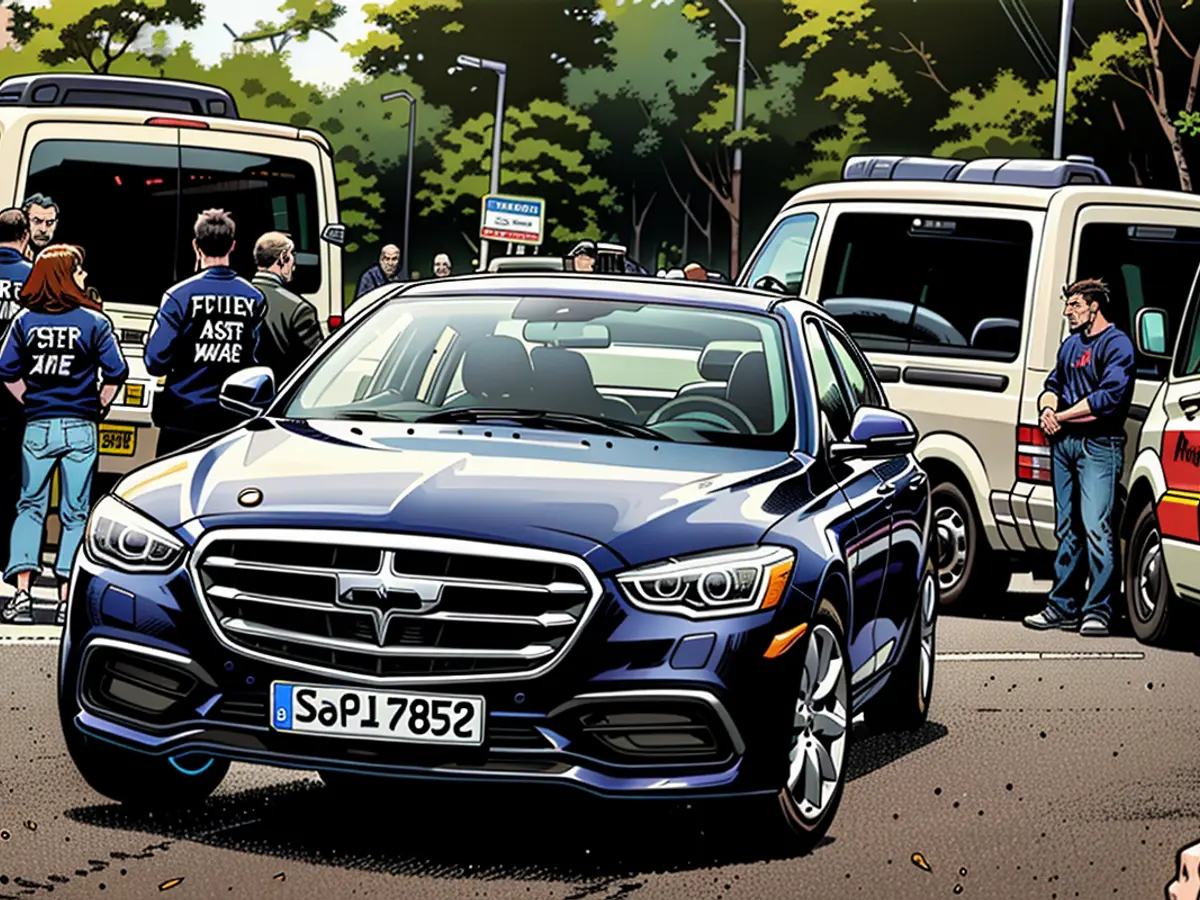Diesel, Hybrid or Electric - These German top politicians do not adhere to the emission standards
Private jets and limousines should remain in the garage. Annalena Baerbock promised before taking office that she would travel more by train and, if necessary, by commercial flights instead. Truthful or naive? It's unclear today. What is certain is that Germany's green Foreign Minister has not adhered to this. In her first year alone, she traveled at least 100 times through the Federal Republic and abroad. She flew commercial four times and took the train twice, according to media reports, citing the Foreign Office.
Baerbock had to extract a sigh of relief from that. Others are more relaxed. For example, Friedrich Merz flew to Christian Lindner's wedding in Sylt with a private jet. Or former Defense Minister Christine Lambrecht, who hopped into a helicopter for a brief visit with the troops in northern Germany, with her son in tow. For politicians from the Berlin Senate, such trips with the government car have long been routine: Since 2022, they have been allowed to use their cars for vacation trips.
Government cars harm the environment and climate – as shown in a study by the German Environmental Aid (DUH). The organization compiled the CO2 emissions of the vehicles of 252 politicians across Germany in a ranking. If a politician owns multiple government cars, only the most environmentally damaging one was considered.
Disappointing result: The majority fails the DUH test. Following the Diesel emissions scandal, the EU has tightened emissions limits. Cars can only emit 95 grams per kilometer. However, nearly three-quarters of the government cars exceed the European fleet limit, emitting significantly more CO2 than a typical car registered in Germany actually should.
Few Electrics, Many Combustion Engines, and More Plug-ins

73 interviewees were driven in combustion engine vehicles. The most environmentally damaging cars are in the garages of NRW Minister President Hendrik Wüst (CDU), NRW Interior Minister Herbert Reul (CDU), and Berlin Senator for the Interior Iris Spranger (SPD). Only six politicians use pure electric cars, including Environment Minister Steffi Lemke (Greens), Agriculture Minister Cem Özdemir (Greens), and Hamburg's First Mayor Peter Tschentscher (SPD).
Plug-in hybrids are the most popular, according to DUH analysis. Cars with combustion engines and batteries. The automotive industry praises them as a compromise because they can be used electrically in cities, thus not harming the urban climate further. At the same time, they can cover long distances comfortably with the help of a combustion engine.
For critics, they are an ecological disaster. Unlike electric cars, the owners are not as forced to charge the vehicles regularly. If the battery is empty or there is no charging station at hand, one simply drives less eco-friendly. Studies show that plug-in hybrids are predominantly used in the combustion engine mode. The amount of CO2 emitted depends on the motor and driving behavior, and a DUH study shows that they emit more CO2 than pure diesel or gasoline cars, depending on the worst-case scenario. It is uncertain whether the top politicians actually drive this way.
The study presents a clear picture, yet the statistics are not fully conclusive. Particularly endangered politicians' vehicles, such as those of Chancellor Olaf Scholz, Economy Minister Robert Habeck, Finance Minister Christian Lindner, or Annalena Baerbock, did not enter the study's calculations. Moreover, the study did not examine how frequently politicians use their vehicles or how far they travel in them. The more climate-damaging flight journeys were also not considered.

Two eco-friendly state leaders
No state government in Germany manages to meet European emission standards nationwide. In some places, the values are more than double the limit.
The situation is similar among state leaders. Hamburg's First Mayor Peter Tschentscher (SPD) and Baden-Württemberg's Minister-President Winfried Kretschmer are the only ones who adhere to European guidelines according to the investigation. Bremen's Mayor Andreas Bovenschulte (SPD) is in third place. His service vehicle emits 167 grams of CO2 per kilometer. Hendrick Wüst (CDU) emits more than double that: 380 grams per kilometer.
Rare, but present: politicians with a service bicycle. The German Environmental Aid lists three, including Bremen's Environment Minister and two officials from Habeck's Economy and Climate Ministry. Hamburg's Transport Minister, according to the ranking, does not have a service vehicle or a service bicycle. He therefore moves around either on foot or using public transportation.

There are indeed eco-friendly politicians in the political landscape – and thus enough role models for colleagues who also like to use their cars and the like privately.
Baerbock's travel habits have been a subject of discussion, with her traveling significantly by air despite her promises of climate protection. However, improving her environmental record, she flew commercially four times and took the train twice during her first year in office. (climate protection, Baerbock, travel, air, train)
The study by the German Environmental Aid found that many politicians, including Baerbock, fail the emissions test, with combustion engine vehicles being the most common choice. Electric cars are used by a few politicians, such as Steffi Lemke and Cem Özdemir. (Environment, study, Baerbock, emissions, combustion engine vehicles, electric cars)
Politicians have various choices for travel, from eco-friendly options like trains and electric cars to less sustainable choices like private jets and government cars. Despite the availability of eco-friendly options, many politicians continue to rely on vehicles that harm the environment and climate. (Environment, politicians, travel, eco-friendly options, government cars, harm the environment)








